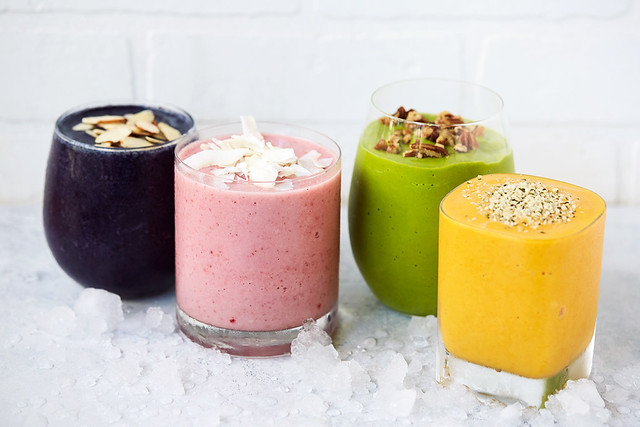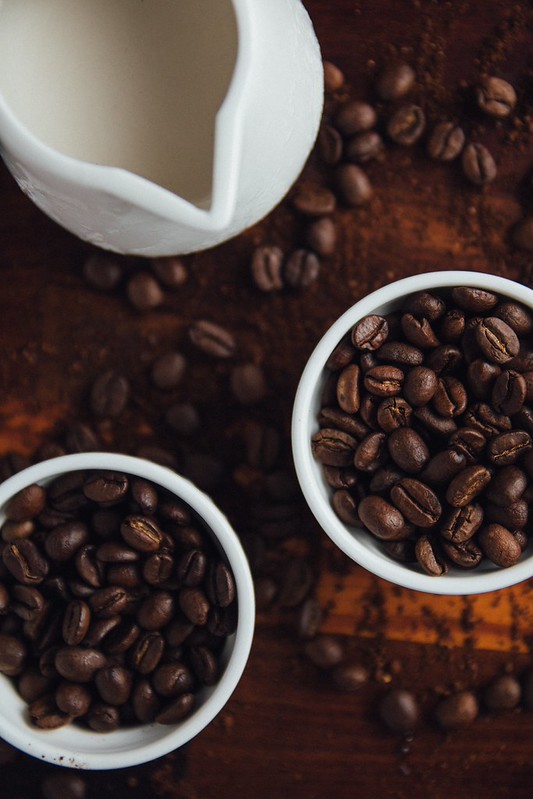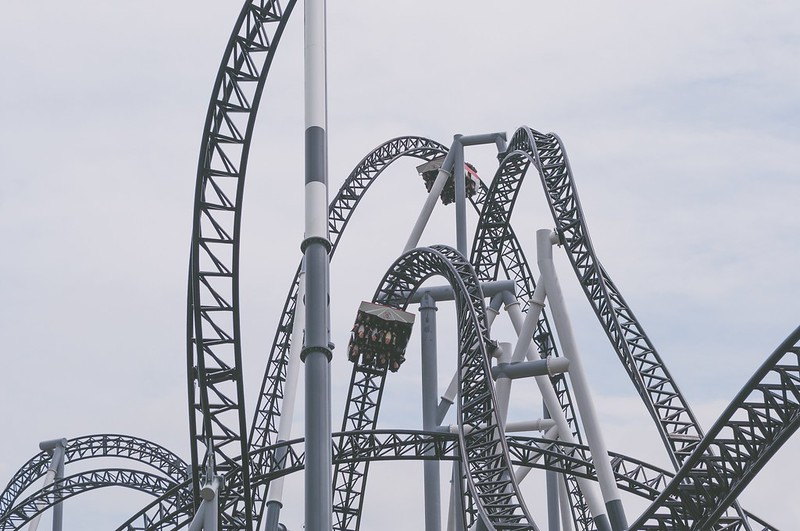-
The Basics of Blood Sugar
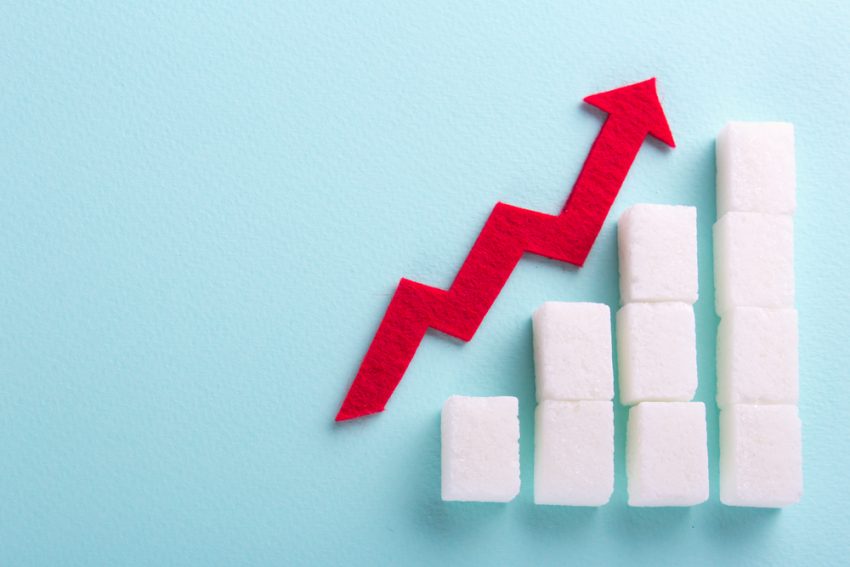
Are you concerned about your blood sugar? What is blood sugar and why does it matter so much?
It is possible, you have heard the term “blood sugar” before this article. Most people think of blood sugar and they think about the “blood sugar crash” we’ve all experienced before – feeling low energy, raging hungry and maybe even feeling shakey or experiencing those annoying tension headaches. What most people don’t realize is that this blood sugar low, it is almost always a result of a previous blood sugar high. The blood sugar spikes are what inevitably lead to those major crashes, but we are rarely talking about “blood sugar spikes” and what leads to them.
Before we get into the nitty gritty of blood sugar, it’s important to note that blood sugar isn’t just ‘a diabetes thing’ and it isn’t just an obesity thing. Every human, no matter their size, their age or their body type has blood sugar and any human can have blood sugar imbalances.
What is Blood Sugar / Blood Glucose?
Blood sugar, also known as blood glucose, is the amount of glucose present in your blood stream. Glucose in the bloodstream is affected most by the foods you eat. Your body creates glucose in the bloodstream by digesting these foods into a sugar that circulates in your bloodstream. Our body will then use that blood sugar for energy, then what isn’t currently needed for energy will get stored in the cells for later use.
Blood glucose levels are raised most significantly with carbohydrate foods, foods made from refined grains, breads, noodles and pastas, baked goods and pastries, sugar and sugary foods, but these carbohydrates also include grains in their whole state, starchy vegetables, fruits, etc. Yes, some of these carbohydrate foods can absolutely be a part of a healthy and well-balanced diet, it’s all about how much of these foods you eat at once and in what combination – this is what we need to be most aware of when it concerns blood sugar imbalances.
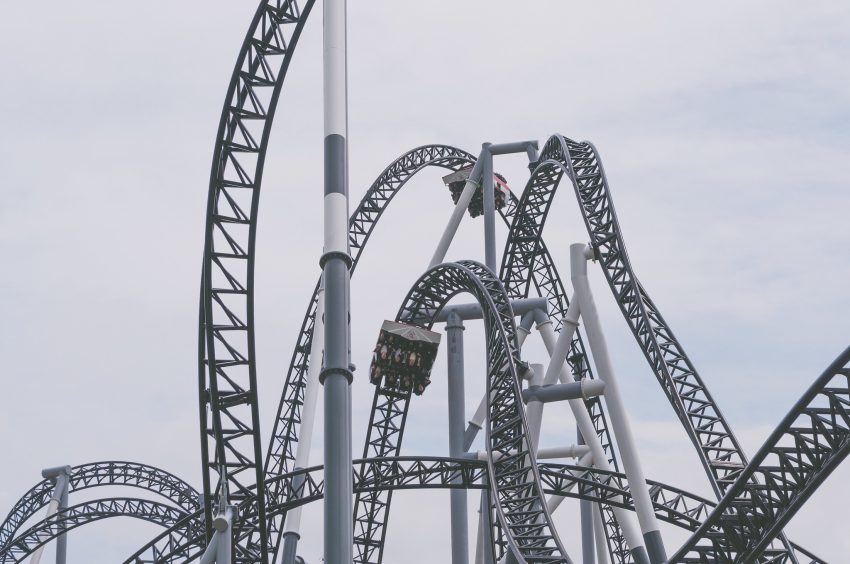
What Goes Up, Must Come Down
Where blood sugar (AKA blood glucose) is concerned, every single time you eat your blood sugar will rise, this is a natural, human response to food and energy production, how much so will depend on both the kind of food you are eating including the macronutrient profile of the food (which we will get to), as well as the quality and the quantity of that food and of course, the current health state of your body.
Unfortunately, thanks to the modern diet rich in simple carbohydrates (a diet common for many folks), the balanced, even blood sugar that our body has adapted to handle and manage with ease is far less common than not. A large influx of simple carbohydrates in a single meal, think pancakes with syrup at breakfast, a bagel, cereal, toast, a gigantic bowl of pasta for lunch, etc – this will lead to a swift rise in blood sugar levels. With a quick rise in blood sugar, our body sees this as an emergency that must be dealt with immediately.
How does the body deal with these blood sugar spikes? Let’s get into the basics of blood sugar regulation.
Blood Sugar Regulation
‣ When blood sugar rises this stimulates the pancreas to release insulin to help bring down blood sugar levels by storing away excess glucose as glycogen and triglycerides to be used later for energy.
‣ But insulin can overcorrect, causing blood glucose levels to drop too low (called reactive hypoglycemia), which the body also sees as an emergency.
‣ The central nervous system then signals the release of epinephrine and norepinephrine, followed by cortisol, to bring up blood sugar levels by converting glycogen and amino acids to glucose.Especially when we over-consume simple carbohydrates — which is very easy to do, for a variety of reasons including our genetic programming, the instant mood and energy boosts that we are often craving (thanks to stress, lack of sleep and blood sugar imbalances) and easy access to hyper-palatable processed foods — this same cycle can repeat over and over again throughout the day, eventually leading to blood sugar dysregulation, insulin resistance, possibly adrenal / HPA Axis issues (thanks to the excessive output of cortisol) and a myriad of symptoms associated with each of these.
The big players in the blood sugar system:
Most people don’t realize this, but the brain is the primary organ of blood sugar regulation, which in turn directs the activity of the following 5 primary peripheral organs and tissues via the:
- Pancreas
- Adrenals
- Adipose Tissue
- Liver
- Skeletal Muscle
AKA (the “PAALS”)
As well, the central nervous system works in tandem with these 5 primary hormones to help regulate blood sugar levels:
‣ Insulin – Insulin is produced by the beta cells of the pancreas and plays a very important role in regulating blood sugar levels. Insulin is essentially the key to unlock out cellular “gates” to let energy in, meaning the excess glucose found in the blood. The excess energy (glucose and fat) gets stored away in the cells of our liver, muscles, and fat tissue.
‣ Glucagon – Glucagon is produced by the alpha cells of the pancreas and it promotes the breakdown of glycogen to glucose in the liver. Glucagon balances insulin. When blood glucose levels drop sometime after eating this stimulates the release of glucagon for more energy. This cycle tells your cells to then release stored glycogen for energy to hold you over until your next meal. This cycle repeats itself throughout the day. Glucagon is essentially key that unlocks our cellular “gates” to let glucose and fat out of our cells.
‣ Epinephrine & Norepinephrine – Both epinephrine and norepinephrine are released when the body experiences a stress and it fears for it’s safety. Whether an external physical threat or internal, such as low blood sugar, these are part of the central nervous system’s fight or flee mechanism, designed to keep us safe. Epinephrine stimulates glycogenolysis in the liver, which converts glycogen to glucose, as well as lipolysis, which releases fatty acids from triglycerides stored in body fat and finally gluconeogenesis, which converts lactate, glycerol, and amino acids to glucose in the liver. All as a means to have the energy to fight or flee.
‣ Cortisol – Cortisol is a steroid hormone released when stress levels are high or blood sugar levels are too low. It increases the fuel (or energy) available to the heart and skeletal muscles in the same ways that epinephrine does, through stimulation of glycogenolysis, lipolysis and gluconeogenesis. However cortisol is slower to respond, taking minutes rather than seconds, since cortisol relies on the complex process of the HPA-Axis. (Another amazing topic for another day).
A really easy way to remember all of this: if blood sugar regulation were an orchestra, the central nervous system would be the conductor and the PAALS, the instruments.
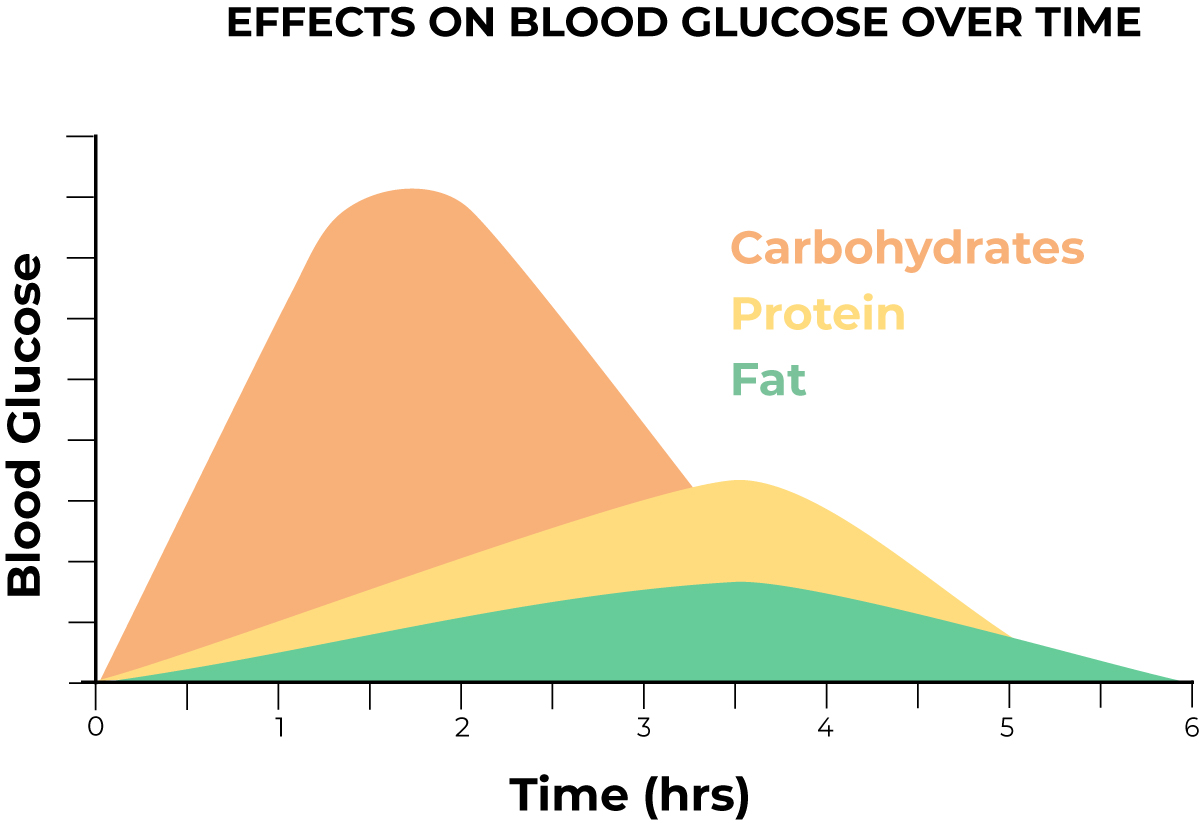
How the Food You Eat Affects Your Blood Sugar
Every single food we eat can be broken down into three macronutrient groups:
‣ Carbohydrates
‣ Protein
‣ Fat
Foods found in their whole food state are almost always dominant in one of these macronutrients over the others, but many foods contain a mixture. As mentioned previously, while all macronutrients will cause some increase in blood glucose levels, as you can see above carbohydrates will cause a larger increase than others, meaning the post meal crash that results will also be larger. Being aware of not only what types of foods you are consuming and how it affects your blood sugar is the first and easiest way to start balancing blood sugar levels and avoiding big spikes and huge crashes.
While you may be able to, at this point, do some simple reasoning and see how a meal of JUST carbs can cause an extreme blood sugar spike and crash, you may not still understand what foods fall under which categories, so let’s look at some other common foods.
Some examples of various foods and their dominant macronutrient group:
- Sweet potato: unrefined carbohydrate
- Boneless skinless chicken breast: protein
- Broccoli: unrefined carbohydrate
- Bacon: protein and fat
- Bowl of pasta: refined carbohydrate
- Apple: unrefined carbohydrate
- Eggs: protein and fat
- Steak: protein and some fat (more or less fat depending on the cut)
- Spinach: unrefined carbohydrate
- Whole Grain Rice: unrefined carbohydrate
- Avocado: fat and some carbohydrates
- Beans: unrefined carbohydrate and some plant-based protein
- Ice cream: refined carbohydrate and fat
In nature, carbohydrate-rich foods, in their whole food state almost always contain significant amounts of fiber. The fiber found in unrefined carbohydrates will actually slow down the effects on blood sugar as compared to a refined carbohydrate like a pastry, baked good, bread, pasta, juice, dessert, etc. which often have little in-tact fiber remaining. While fiber itself is a carbohydrate, it should not cause an increase in blood glucose or insulin as it is not digested by the small intestines and instead they make it to the large intestine where they are broken down by bacteria. In some cases fiber can actually decrease glucose and insulin levels. Fiber can been shown to improve insulin sensitivity, decrease heart disease risk and foster beneficial bacteria in our guts. Another benefits to fiber is that it “bulks up” and helps you to feel satiated and full.
In this same way when we combine our whole food carbohydrates with protein and fats, which we will get to in just a moment, the fiber found in whole food carbohydrates can provide an additional blunt to the blood sugar spike we would get from the carbohydrates alone. When we refine foods away from their whole food state, grains made into flour for baked goods, fruits that get juiced, sugar that is stripped of any nutrients, we are taking a direct hit of sugar to the blood and you know what comes next.
Added processed and refined fibers added to packaged and processed foods aren’t exactly the same as the in-tact fiber found in whole, unrefined foods as they are found in nature. Often these products advertised as low or no carb (because of the net carb approach) and they will often be loaded up with fibers, but it doesn’t mean these products are a good choice. Fibers added to processed foods like these may not cause the same response in the body that fiber found in whole foods will. Meaning it may still cause a glucose and insulin response and in some cases it may also cause some aggressive digestive issues. The FDA is currently investigating many of these “false fibers”.
PLEASE READ THIS AND THEN READ IT AGAIN:
Nutrient-dense, non-starchy vegetables like broccoli, spinach, cauliflower, kale, Brussels sprouts, cabbage, asparagus, mushrooms, peppers, zucchini, celery, cucumber, eggplant etc etc – these foods, while they are certainly more dominant in carbohydrates than protein or fat, they are so low in carbohydrates and so rich in fiber, vitamins, minerals and phytochemicals — that these should be consumed in unlimited abundance at every meal, without concern for blood sugar levels.
It’s also important to note that these main macronutrients are not the only foods / things that can cause a blood glucose spike. One randomized trial study showed that caffeinated coffee can impair the body’s ability to manage dietary glucose, resulting in higher blood sugar levels.1https://academic.oup.com/ajcn/article/87/5/1254/4650389 so it is important to always stay curious. In part two of this series we will be talking more about these other factors.
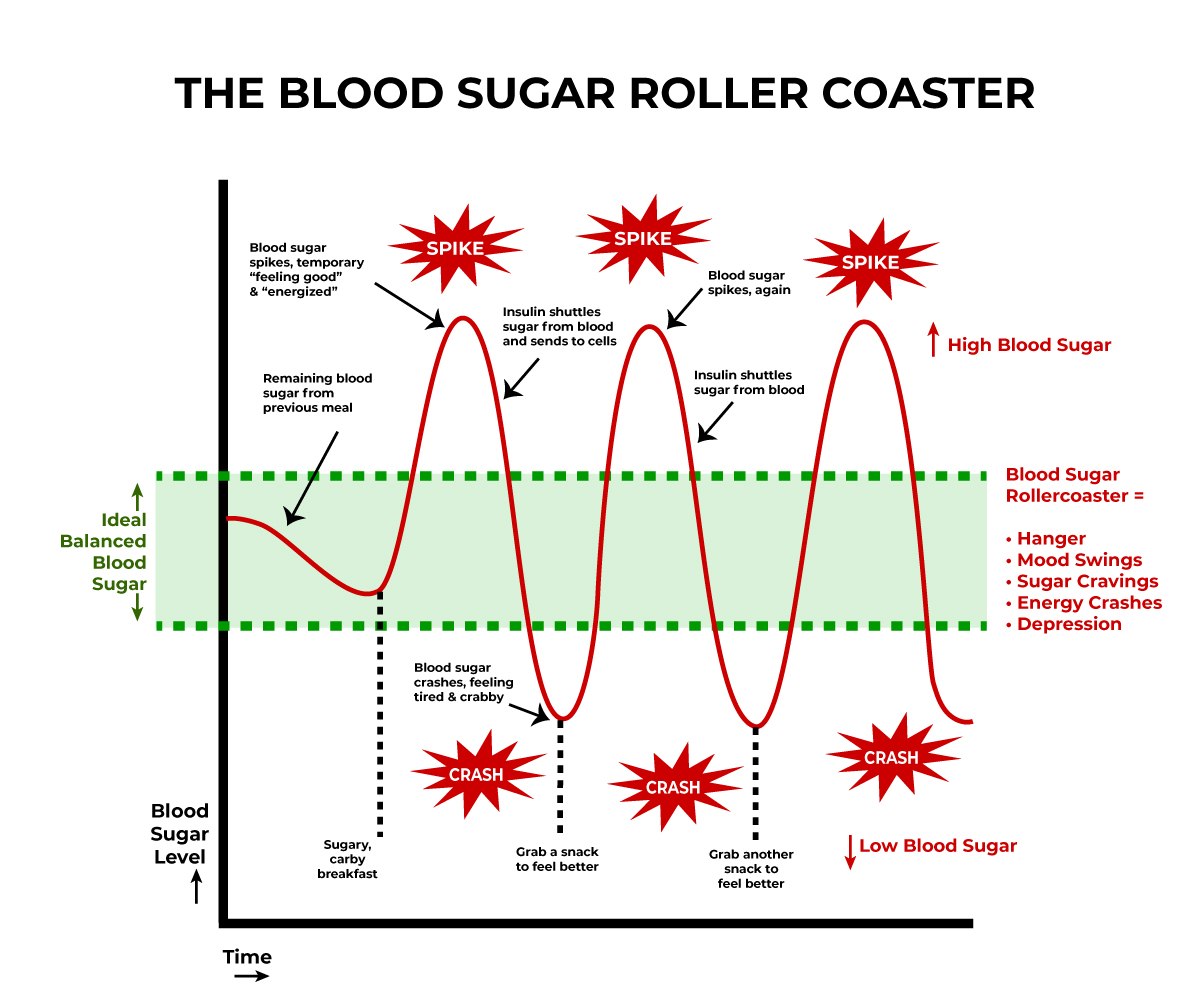
The consequences of constantly eating high sugar and high carb foods
As you can see, starting the day off with a carbohydrate-rich breakfast sets the tone for the day right out of the gate with a big blood sugar spike. Then comes the drop and if your choice for a snack, for a quick jolt of energy to bounce back is carb or sugar rich, you can see how the cycle continues. Your first meal sets the tone for the day and having balanced blood sugar levels all day means controlled energy levels, balanced moods, less cravings, no crashes or headaches and you aren’t continuously chasing your hunger.
How to Get off The Blood Sugar Roller Coaster – What Can You Do?
‣ Eat Enough Healthy Fats and Quality Proteins
Fat and protein have very little affect on blood glucose levels, compared to carbohydrates. Protein and fat also blunt the insulin release from the carbs on your plate. Protein and fat also send signals to your brain that you are full via important hunger hormones that help you avoid overeating. At every meal, prioritize a quality protein on your plate first, be sure you are including some healthy fats (read more about health fats here) if the protein you are eating is lean and doesn’t include enough on it’s own and fill the rest of your plate with nutrient-dense, colorful, in season non-starchy veggies. Dark leafy greens are one of my favorites for lots of important nutrients and fiber.
‣ Reduce Your Refined Carbohydrate Consumption and Avoid Excessive Sugar
Focus on quality of carbohydrates, balance of macronutrients (carbs not being the dominant), bio-individuality, everyone needs different amount of carbohydrates. Prioritize nutrient-dense whole food carbohydrates, think of a food that you could eat that you can imagine growing in nature, exactly as it is on your plate. These foods should be prioritized as your source of carbohydrates over refined carbohydrates and sugar-rich foods. The amount of carbohydrates each individual may need will depends on many factors, hormone health, HPA-axis health, age, gender, activity level, etc. If you determine that you do want/need to include more carbohydrate-dominant foods in your day, I recommend saving your starchy-veggies or carbohydrate-rich foods for your last meal of the day, this way, any drops in blood sugar are happening at a time of day where your energy would naturally be dipping to prepare for bedtime, any cravings that result won’t be a struggle. You will be asleep. Start the next day with a strong, protein and fat-rich breakfast so you can continue to keep things level and balanced throughout your day, with ease.
‣ Avoid Unnecessary, All-Day Snacking
Continuously eating, all day, will keep blood sugar levels either continuously elevated which means elevated insulin all day or it will be stuck in the loop of going up and down, all day. It’s not that snacking is inherently bad, but if you struggle with energy issues, if you crash halfway through the day, if you experience high highs and low lows that make you feel like you need to snack – this could be an indication you aren’t eating enough or properly at meal time or that your blood sugar is significantly imbalanced. Consider eating more at meal time and prioritizing protein and fat over carbohydrates and be sure you are eating enough. If you are eating protein and fat as the main focus of your meals and you are still feeling the need to snack all day, that this means you are likely not eating enough food. Focusing on both of these should help with the need to snack. If reducing your refined carbohydrates and sugar is a new way of eating for you, snacking may be helpful until your blood sugar levels are more balanced, so it is suggested that you consider protein and fat forward snacks when you you do snack. This post includes lots of options.
‣ Move Your Body
In our current, modern lifestyles where stress and sympathetic nervous system dominance becomes the norm, if we remain sedentary we the cortisol being released into our blood streams to keep circulating longer than it should. This can have detrimental long-term consequences but at the very least it can further dysregulate blood sugar levels. Physical movement can help stress management overall, but it can also help process out stress hormones that are present in the body more quickly, but movement is also an incredible method for using up excess blood sugar and increase insulin sensitivity. Even just one 30 minute session has been shown to improve insulin sensitivity by decreasing glycogen synthesis.2https://www.ncbi.nlm.nih.gov/pmc/articles/PMC3381815/
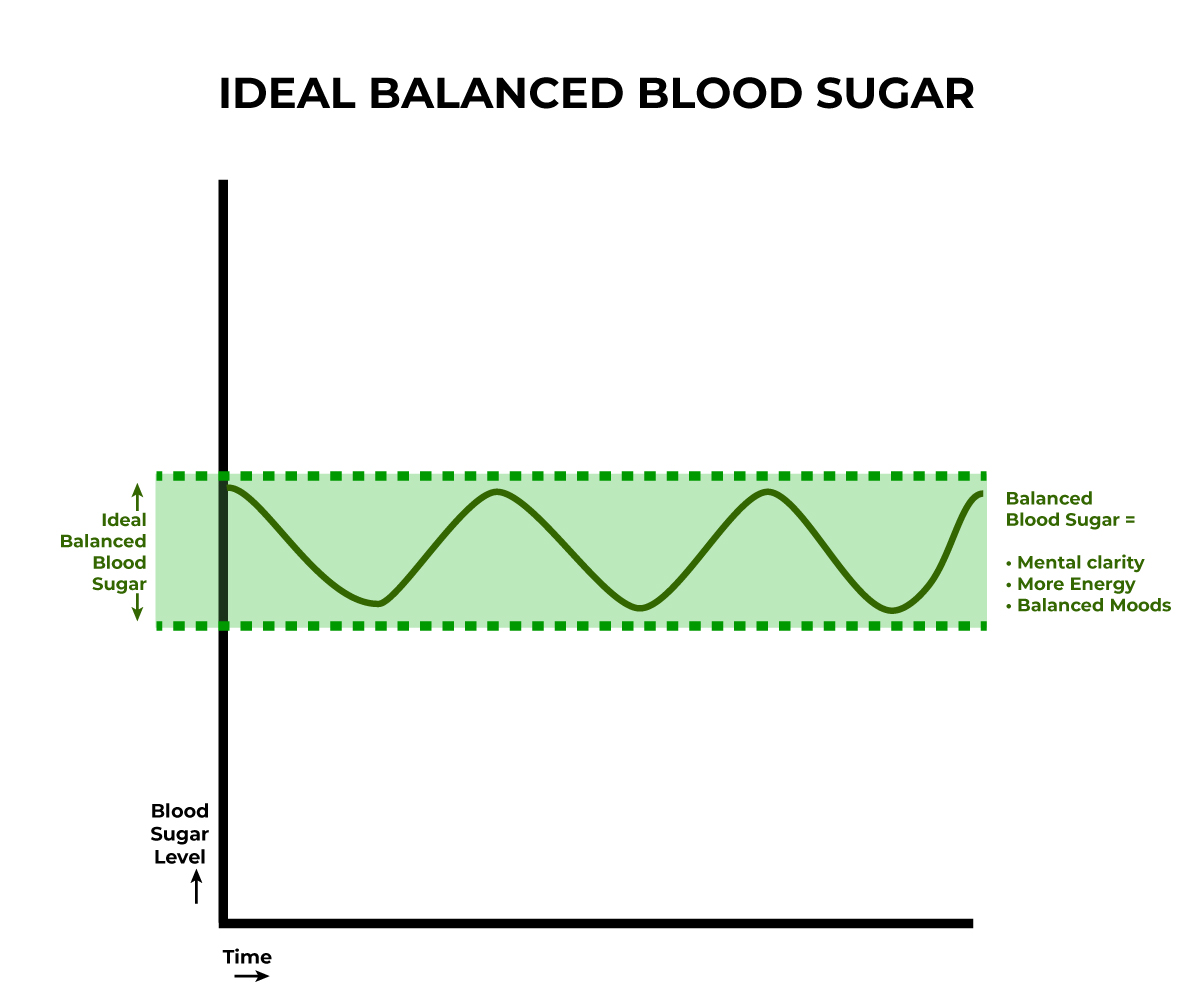
Looking for more support?
‣ Strong All Day Long
if you are experiencing daily energy crashes, hanger, cravings, mood swings and you are looking to make a few simple, easy-to-implement shifts right away, this 5-day program and 7-day meal plan are for you!! I am giving you the 5 big solutions I share with EVERY one of my 1:1 nutritional therapy clients, these shifts bring huge results with minimal efforts. There’s no diet, there isn’t a list a foods to avoid and nothing to track. You will learn how to create healthy plates of food, go more in depth on the various delicious quality proteins and fats to include, tips for meal planning to make eating easy, plus hidden sources of sugar and lots more. This is a focus on the foundations, simple approach to getting your blood sugar under control!! Learn more and get instant access to the program and your meal plan here.
‣ Keto for You
this program is designed to assist you in using a food-as-medicine, healing ketogenic approach to support your body is switching away from relying on sugar as it’s source of fuel. If you are the constant blood sugar roller coaster has resulted in metabolic dysfunction, an inability to lose fat, inflammation and joint pain, hormone imbalances and beyond and you are ready to get on the other side of these once and for all – this fully personalized nutrition program and masterclass will help you in finally taking control of your health and ditching the constant dieting roller coaster of on-again / off-again extreme restriction that never works. This 8 week program is full of customized nutritional protocols, supplement recommendations, 8 weeks of meal plans and recipes, weekly mindset practices, amazing expert guest teachers and in-depth learning so you can create a sustainable lifestyle that will be right for you. Learn more and sign up now here.
This program is designed to support you in using a ketogenic approach as a powerful intervention and healing tool to guide you in creating a sustainable fat-fueled lifestyle for yourself for long-term, so you can adjust and shift as life changes – so you can finally ditch the sugar fueled, blood sugar crashing, inflammation-causing approach that hasn’t been working for you. Head here to learn more and sign up. Enrollment is open for just a short time and the program will not be available again until later in 2020. If you aren’t sure if keto is the correct approach for you, you can watch this FREE online workshop Is Keto for You? to learn more or book a FREE 15-minute call with me and I am happy so answer your questions.
‣ 1:1 Nutritional Therapy and Health Coaching Support
If you are concerned there is more going on at a root cause level, possibly gut imbalances or pathogens, food sensitivities, complications from autoimmune disease or if you are looking for more direct 1:1 support including personalized action plans, lab testing and interpretations, supplemental support, if you are craving accountability and someone to help you dig deeper along side you, with nutritional support, lifestyle recommendations, mindset and mindfulness practices and more – working together one-on-one would be a really great option for you. You can apply to be a client here. Once I review your application, I will contact you about scheduling your FREE discovery call and we can decide if we are a good fit for one another.
PLEASE NOTE: Low post-meal blood sugar levels can happen to folks with normal fasting blood sugars, it can happen to someone who is insulin resistant and obviously in individuals with diabetes but it can also be a symptom of some types of Polycystic Ovarian Syndrome – with all of these scenarios, this type of low blood sugar is referred to, as mentioned above, reactive hypoglycemia. In most cases this type of low blood sugar can be treated with a lower carbohydrate approach, to balance blood sugar levels. Medically diagnosed hypoglycemia is different and should be treated with a health care practitioner, if you experience consistently low blood sugar levels and you are a diabetic on medication you may need to work with your doctor on changing your medication levels to match your carbohydrate intake. Ongoing low fasting blood sugar levels can also occur in people who do not have diabetes and can be the result of a serious underlying medical condition. If you have continuously low fasting blood sugar levels and do not take diabetes medications, you should see your healthcare provider.
Please Stay Tuned for Additional Articles in this Series Where You will Learn:
The Long-term Consequences of Imbalanced Blood Sugar
How Stress Affects Blood Sugar
Other Factors to Consider that Could Raise Your Blood Sugar
and More.
Got questions you want to be sure get covered in future articles, leave your comments below.
References
1. ↑ https://academic.oup.com/ajcn/article/87/5/1254/4650389 2. ↑ https://www.ncbi.nlm.nih.gov/pmc/articles/PMC3381815/ -
The 14-Day Caffeine-Free Challenge // Reset Your Caffeine Tolerance
This 14-Day Caffeine-Free Challenge serves as an opportunity to break the caffeine addiction for good or as a temporary break to give your neurotransmitters a hard reboot. Consider it a reset to your caffeine tolerance.
The 14-Day Caffeine-Free Challenge // Reset Your Caffeine Tolerance
To simplify it, as your body becomes accustomed to consuming caffeine, you need to consume more and more of it to experience the same energy boost. Acting in a similar manner to anti-depressants, high doses of caffeine on a regular basis acts as central nervous system stimulant and can flood the brain with neurotransmitters, creating neurotransmitter resistance or long term receptor damage 18. Olekalns, N. (1996). Rational addiction to caffeine. Journal of Political Economy, 104(5), 1100.
Reasons to Take a Break From Caffeine and Reset Your Caffeine Tolerance:
- Caffeine no longer affects you the way that it once did
- You crave caffeine and NEED it to start your day or to get through the day
- Your daily caffeine consumption amounts are insane
- You are experiencing high levels of stress, anxiety, anxiousness or adrenal fatigue
- Your sleep health has been suffering
- It’s leading to health problems
- Doctors orders
How-to Beat the Coffee Addiction
The good news: to kick the caffeine habit, you really only need to get through about 7-12 days without drinking any caffeine. During that time, your brain will naturally decrease the number of adenosine receptors on each cell, responding to the sudden lack of caffeine ingestion. If you can make it that long without a cup of joe or a spot of tea, the levels of adenosine receptors in your brain reset to their baseline levels, and your dependence will be broken. 2https://www.smithsonianmag.com/science-nature/this-is-how-your-brain-becomes-addicted-to-caffeine-26861037/
You can certainly go cold turkey on cutting out caffeine for this 14-day challenge, but if you are a hardcore caffeine consumer, you may want to consider preparing by cutting back gradually and replacing your traditional caffeinated coffee with either half decaf or more gentler forms of caffeine, found in quality teas like green or black tea. I personally really LOVE a Matcha White Hot Chocolate as a gentler alternative to caffeinated coffee, such a treat.
How-to Take a Break from Caffeine and Reset Your Caffeine Tolerance:
References
1. ↑ 8. Olekalns, N. (1996). Rational addiction to caffeine. Journal of Political Economy, 104(5), 1100. 2. ↑ https://www.smithsonianmag.com/science-nature/this-is-how-your-brain-becomes-addicted-to-caffeine-26861037/ -
How-to Take a Break from Coffee (and Why You May Want to Consider It)
Are you feeling that afternoon slump and reaching for coffee or other caffeine to power through? Is your sleep inconsistent and often interrupted? Are you finding yourself needing more and more coffee to get through? Follow along to learn How-to Take a Break from Coffee and Why You May Want to Consider It.
How-to Take a Break from Coffee (and Why You May Want to Consider It)
I am not one of those die-hard, ride or die coffee drinkers who’s been at it every morning for many, many years. There was a very long time, during the middle of my healing journey that I wasn’t able to handle any coffee at all. Even a single cup would cause extreme jitters and serious feelings of anxiousness.
After I healed my gut, went through an extensive liver detox and rectified my adrenal fatigue, among many other things, I did a little experimenting and low and behold, me and coffee were friends once again. We would connect occasionally when I was craving it. Generally it was Boosted, as I found this lessened any jitters straight up black coffee might cause. Overtime I created my own Healthier French Vanilla Coffee Creamer for those folks in my life that wouldn’t give up the sketchy store-bought stuff. I learned to make my own cold brew at home and I even fell in love with a Mint Mojito Iced Coffee number and found myself adding it to keto granola. But, some time last year my occasional cup of coffee, only when it sounded good, turned into an every single morning thing. It became part of my morning routine and the ritual of it became as much a part of the craving (or more) as the caffeine itself.
Then my one 8 ounce cup of coffee in the morning turned into 12 ounces. Suddenly my life included the occasional afternoon coffee. Sometimes even an evening cup. This evolved into me craving coffee when I felt that afternoon slump hit and I would actually at times find myself smelling it, even when it wasn’t around because my brain was lusting after it so deeply to give me that boost. I was finding myself traveling and making plans for how I would get that perfect cup of coffee on the road.
It was fine. Because in my mind, coffee has so many wonderful health benefits and if a light caffeine reliance was the worst thing I had going for me, I would say I am doing pretty good in life. After all, at this point I have chosen to basically all processed foods and for the most part all grains, dairy, legumes, sugar, etc etc all to manage my health and autoimmune symptoms. Just let me have my dang coffee.
The Benefits of Coffee
Coffee has many brain-protective compounds and an abundance of antioxidants, polyphenols and bioactive compounds. Coffee contains vitamin C, magnesium, polyphenols, catechins, flavonoids, and chlorogenic acids. and it’s generally regarded quite favorably by recent research. 1https://www.ncbi.nlm.nih.gov/pubmed/26784461
References
-
Is Snacking Healthy? Should You Snack? + Smarter Snack Ideas
Is snacking healthy? Should you snack? If you find you are chronically grazing on many small meals throughout your day because of excessive hunger, you can likely blame imbalanced blood sugar and not eating for satiety. In this post we talk about snacking along with some healthy snack ideas for when a gap snack might be necessary.
Is Snacking Healthy? Should You Snack?
Let’s talk about snacks baby. Let’s talk about you and me. Let’s talk about all the good things and the bad things, that may be. Let’s talk about snacks! hahah. Sorry. I digress. Seriously though. Determining what to eat is challenging enough of a question, but add to that, the question of when and how often to eat – this adds a whole new additional layer of unanswered inquiries and confusion for many.
Smaller More Frequent Meals Helps Boost Metabolism, Right?
While convention nutritional advice long touted 5-6 small meals throughout the day as a means to increase your metabolism and encourage fat loss, this antiquated approach doesn’t look at the full scope of our day and what is actually happening in the body with every snack or small meal. For so long, many “experts” believed the idea that many small meals is theoretically “stoking the metabolic fire,” while less frequent meals “slow your metabolism.” The thought process was that eating many small meals keeps your metabolism plugging away at a high rate for the entire day, helping you burn more fat. Conversely, it was thought that going too long between meals slows down your metabolism, so that when you do eat, your body is sluggish to respond to the caloric load and you end up storing it as fat.
Sounds pretty smart, right? But, guess what, it’s just not true. There isn’t any science to support it or research that proves smaller, more frequent meals has any metabolic advantage.
What we do know, as research has shown, the more you eat the more insulin your body releases, and this constant output of insulin interrupts the intended flow of blood sugar.
With every meal there is a rise in our blood sugar (which is just the amount of free glucose in our bloodstream) then a release of insulin follows. With lots of small meals through the day that means a blood sugar rollercoaster of highs and lows that can cause additional cravings, fat storage, mood changes, irritability and more.
Besides that, with every meal or snack that we eat, our body has to begin the process of digestion, this takes energy and time, as your body is breaking down the food into usable molecules that are absorbed by the body and utilized appropriately. This process takes energy away from other repairs and tasks your body should be doing. Anything we eat that the body cannot absorb or use in some capacity is then stored as fat. Whenever we snack this stops the process of our body using stored body fat in between meals.
The goal is to instead build a day with more steady blood sugar by getting enough fat and protein at every meal to reach satiety and not solely relying on refined starchy carbs and sugar for quick hits.
-
Happy Hormones: The Importance of Digestion to Hormone Balance
This is the third Happy Hormones post in our Hormone-Focused Series from Nutritional Therapy Practitioner Brynn D’Avello. I suggest reading the first post The First Step to Happy Hormones and then the second post where we tackle how Blood Sugar Imbalance Affects Your Hormones before you dive into this post covering the Importance of Digestion to Hormone Balance.
As we discussed in the previous post in this series, as important and crucial as blood sugar regulation is to hormone balance in this latest installment we will discuss how digestion is a very, very close second. Since I know Beth has done a killer job breaking down the digestive process in her Digestion 101 series I am only going to touch on the highlights…. with a very special emphasis on the liver.
Digestion is a North-to-South Process, and to help strengthen it effectively we must naturally start at the top and work our way down. Most of us would assume that the first step to digestion is in the mouth, but you actually have to go a little bit higher than that. The brain. To activate salivary enzymes your brain must be engaged. That’s why your mouth waters when you smell something delicious. It’s getting the signal that food is coming its way, and saliva, in addition to chewing thoroughly, helps start the breakdown of food into useable nutrients. (You can read more here about the roles that our brain and mouth play in digestion) Once our food gets to the stomach, gastric juices go to work on proteins and then it gets passed on to the small intestine. Here is where the gallbladder kicks in. Bile is secreted to emulsify the fats in our food to assimilate the necessary elements, to be used effectively. Without good quality bile, fats are not digested properly. Fats are absolutely critical to the entire endocrine system. Our body cannot produce hormones without fats.
-
Happy Hormones: How Blood Sugar Imbalance Affects Your Hormones
This is the second post in a Hormone-Focused Series from Nutritional Therapy Practitioner Brynn D’Avello. I suggest reading the first post The First Step to Happy Hormones and then diving right into this one where we tackle Blood Sugar and Your Hormones!
How Blood Sugar Imbalance Affects Your Hormones
The number one principle of the Nutritional Therapy paradigm is, “Always address the foundations first.” So what exactly are The Foundations? The first and most important is a properly prepared, nutrient-dense diet. The other four foundations are digestion, blood sugar balance, fatty acid balance, mineral balance and hydration. When one or more foundations are weakened it leads to what we call consequences, which are usually the symptoms that clients are coming to us, or doctors, to help resolve. Issues like hormone imbalances, weak immune systems, and sluggish detoxification pathways. As Nutritional Therapy Practitioners we do not treat disease. It is our job to strengthen the weaknesses and remove the stressors. This will allow the body to correct the imbalance and bring optimal wellness back.
With hormone balance each of the foundations plays a role, but any attempt to normalize hormonal imbalance is futile until blood sugar issues are addressed. No ifs, ands or buts. In the last post about Happy Hormones we talked about how stress affects the adrenals and hormone production, and how these two glands handle our stress response, but that’s not their only job. In order to maintain proper blood sugar balance it takes the adrenals, the liver, and the pancreas working together in harmony to provide steady energy for the body. Chronic stress leads to elevated cortisol, which exhausts the adrenals. When the cortisol levels are elevated insulin receptors on cells do not respond adequately to insulin. This puts a strain on the pancreas to secrete more insulin, which leads to more stress on the adrenals, higher insulin levels and if this vicious cycle continues… to insulin resistance and possibly even diabetes. A daily roller coaster with dangerous consequences.
Our body’s innate intelligence constantly monitors the amount of glucose in our bloodstream to maintain balance. Too much or too little triggers the release of hormones to return levels to normal. A constant slow stream of glucose from unrefined, whole foods sources, entering into the blood stream in a controlled manner – this is the ultimate goal. Not the large dumps of sugar we see in our food culture. We are NOT designed to run on just carbohydrates. The body is designed to use a balance of unrefined carbohydrates (think vegetables, fruits and some whole, soaked/sprouted grains if you can tolerate them), along with good fats and quality proteins as the primary sources of fuel. Carbohydrates act like kindling in a fire; they are quick burning and work for a short time to get us bursts of energy, as needed. Inevitably we will need more, to keep the fire going for the long haul. When we exclusively are burning carbs/glucose we create a roller coaster with our blood sugar, with the highest or highs and the lowest of lows aka crashes or bonks! Healthy fats and proteins are the logs on the fire, providing a more sustained source of longer lasting, balanced energy, along with providing the body the necessary precursors to create healthy hormones.
-
Don’t Fear the Fat // The Basics
Why Are We Talking About Fat?
The reason I write this post, is that even though, for so many us, we have woke to this knowledge and have worked hard to reframe our approach to nutrition and no longer fearing the fat, we still have so much work to do. After many decades of low-fat propaganda, the “fat makes you fat” rhetoric is still so deeply ingrained in the collective psyche. Many people STILL greatly fear fat, even though study after study shows that fat is not only harmless 1http://ajcn.nutrition.org/content/early/2010/01/13/ajcn.2009.27725.abstract but that it is in fact, quite necessary to many important functions in the body. I myself see this fear weekly in my nutrition clients, all over the internet and in my social feeds, at the grocery store, at restaurants, at the gym, etc and of course, all of the many side effects of low fat eating – we HAVE to change this dialogue!!
The Basics
It is beyond challenging to decide where to even start on such a huge, huge topic. Chatting about dietary fat is a big undertaking and we are going to merely just scratch the surface with this initial post, decoding the myths and where the fat fearmongering began, along with the crucial reasons we need fat in our diet. So, let’s get to the basics.
First and foremost you need to know that fat is a necessity in our bodies. This vital macronutrient provides building blocks for the brain, hormone and cellular membranes throughout the body, it is essential for the absorption of fat-soluble vitamins like A, D, E and K and it is deeply hydrating!
By adequately increasing my healthy fat intake, more than any other change I have made in my lifestyle and diet, I have personally seen profound affects on my health, from my digestion to my skin including chronic hormonal and cystic acne, from my moods to my ability to concentrate, hormonal imbalances to libido (YUP!). Fat is a powerful anti-aging food, both internally and externally. Consumed as part of a healthful diet, fatty acids (the building blocks of fat) help stabilize blood sugar – allowing your body to release fat, protect it’s lean muscle, and surge with energy. When our focus is on creating meals that are rich not only in healthy fats, but also quality well-sourced proteins and fibrous green leafy veggies, we can thank especially the healthy fats for keeping us satiated. Staying satisfied for longer means so you won’t find yourself searching for the junky, processed snacks in between these healthy, whole food meals.
References
1. ↑ http://ajcn.nutrition.org/content/early/2010/01/13/ajcn.2009.27725.abstract
